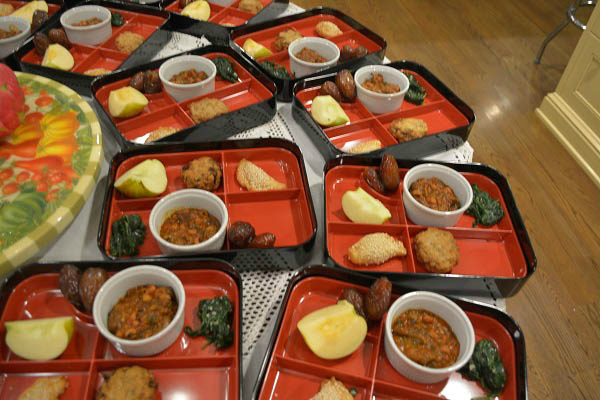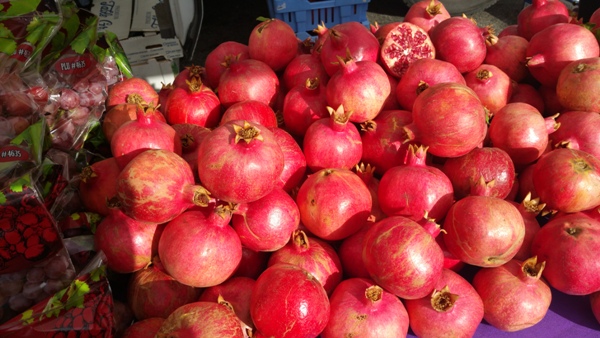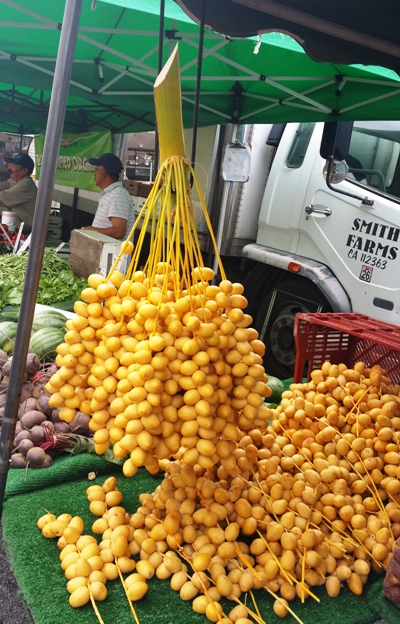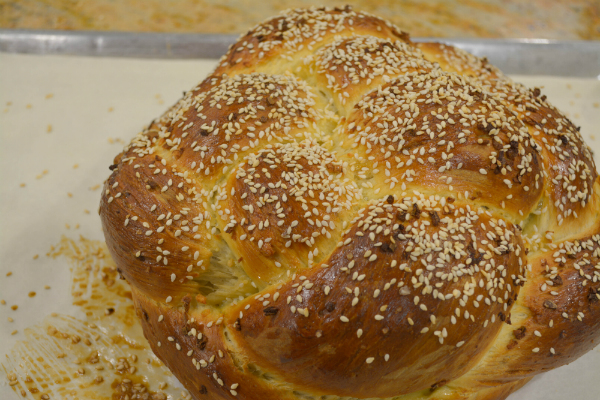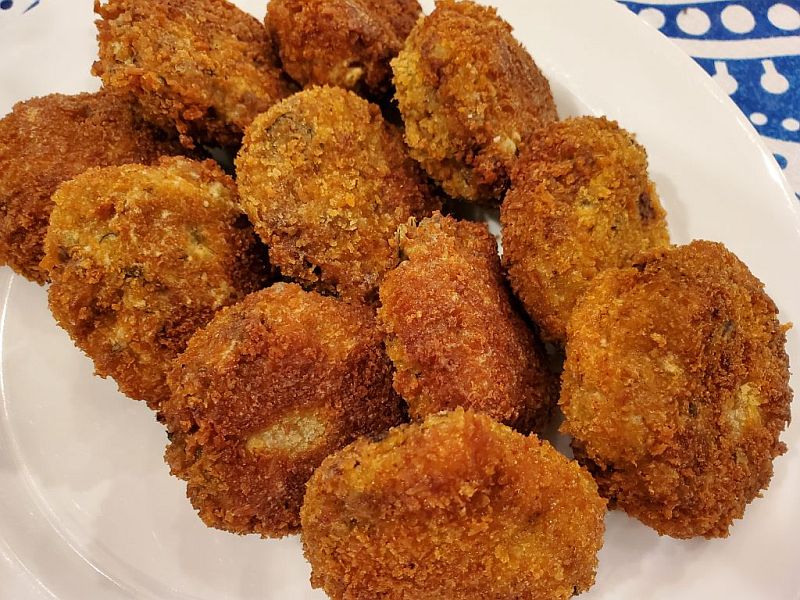Rosh Hashana 2019, 5780
I am having a hard time accepting the fact that Summer 2019 is drawing to a close and Rosh Hashana will be upon us in a couple of weeks. Here in Los Angeles, the usual September heat wave has begun although late at night there is a hint of coolness in the air, a harbinger of fall.
I have been diligently searching the farmers markets to find newly harvested apples. So far I have been successful in my search for New Medjool Dates, a delicious mouthful of creamy, intensely sweet and sticky goodness. Last week I found large, very fresh green leeks for my kuftes de prassa as well as many kinds of honey, including the rare avocado honey. Did you know that every kind of honey, i.e. Sage, Wildflower, Orange Blossom, has a different taste depending on which kind of tree orchard the bees were in. One stall in the market had newly dried Black Eyed Peas for sale so I bought those as well. No luck on Pomegranates yet, though they should be harvested any minute now. I wish I had enough space in my city garden to plant a pomegranate tree. As you know I pursue all of these specific foods in order to fill my menu with the Simanim (Yehi Ratzones [2]) or foods we say blessings on for the New Year.
Rosh Hashana makes me very nostalgic for the days growing up in Seattle’s Sephardic community. My mother, Nona, was cooking and cleaning like crazy..not only the dishes for Rosh Hashana but also canning and preserving fruits and late harvest items that would no longer be available fresh in the coming Fall and Winter months. It was a time when everything had its season more clearly defined than today. Now that I am the one that carries on the traditions, and my family is starting to expand, I am very excited to do my Rosh Hashana preparations. Following is my menu for this year. I wish all of you a Tizku LeShanim Rabot- Moadim LeSimha. A Happy and Healthy and Sweet New Year.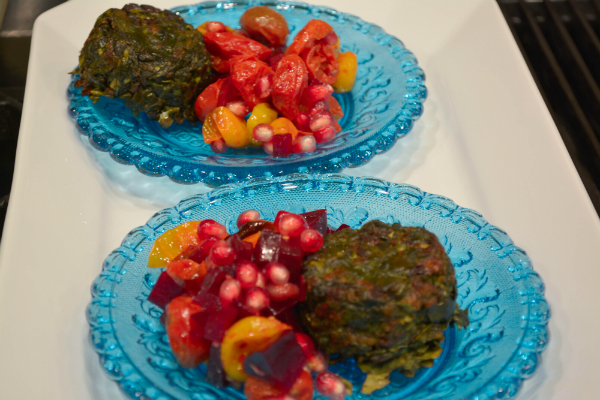 [3]
[3]
Pastelicos [8]
Wine, Challah [9]
Avocado (rare) Honey
) Sage, Wildflower
New Crop Apples
Kuftes de prassa [10], Leek patties ( try rolling in Panko after the egg dip)
New Crop Medjool
Rosh Hashana Muffins [11] with beets and spinach
Fijones [12] (stewed with short ribs)Black eyed peas
Pomegranate arils salad
Fried Halibut [13] with Huevo Lemon
Pumpkin Borekas
Baked head of fish
My Favorite Brisket [14]
Roast Turkey, w/cranberry sauce
Fasoulia (Green Beans)
Green Salad
Rice Pilaf
Parsnip, potato, celery root latkes
Garnet Yam Cake [15]
Triangle Baklava
Fresh fruit
Cranberry Crisp [16]
Apple almond cake
Mixed Biscotti [17]
Be sure to make plenty of these. [18]
[18]
Pumpkin Borekas
Borekas are Sephardic Jewish pastries both savory and sweet baked until crisp and pale gold. I make borekas with homemade dough, the way my mom and my Nona (grandmother) did. Once a year, for Jewish New Year, Rosh Hashanah I make a version filled with cinnamon-scented pumpkin. Pumpkin or squash is one of the Simanim or Yehi Ratzones, symbolic foods over which blessings are recited for the New Year.
Filling:
3 cups pure canned pumpkin
1 and 1/2 teaspoon cinnamon
1/ 2 cup brown sugar
1 egg, beaten
Dough:
4 cups unbleached flour
2 teaspoons salt
3/4 cup safflower oil
1 cup ice water
Topping:
1 egg, beaten
1 cup sesame seeds
Heat a non-stick fry pan on medium heat; add pumpkin and turn heat down to low. Stir with a wooden spoon, until any excess moisture has evaporated and pumpkin is stiff enough to hold its shape or about 5 minutes. Do not brown pumpkin. Cool the pumpkin down and then, stir filling ingredients together in a medium bowl. Filling should not be runny and should retain its shape if mounded. 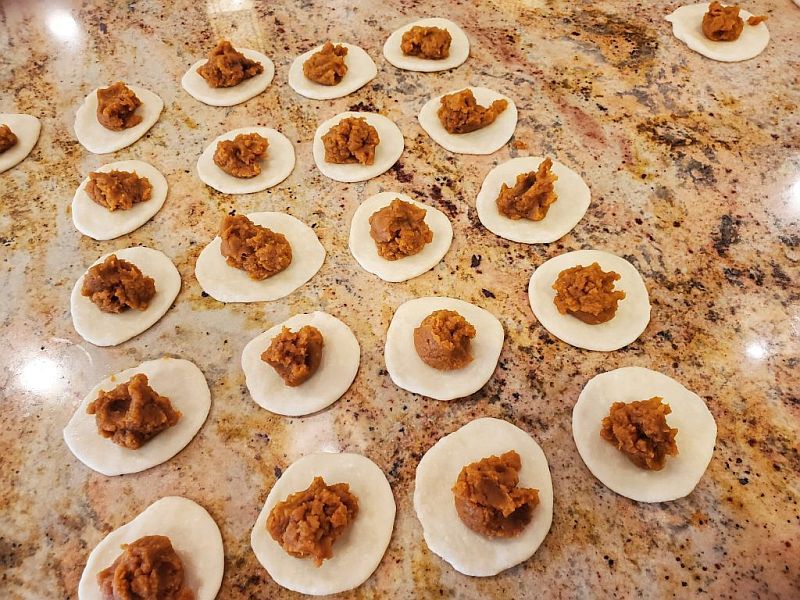 [19]
[19]
For dough, place flour in a medium size mixing bowl. Add salt and blend. Whisk oil and water together in a two cup glass measuring pitcher. Stir liquid into flour with a fork. Using your hands, gently gather dough into a ball. Squeeze dough together but do not knead it like bread.
Divide dough into 48 pieces a little larger than a shelled walnut and place on work surface. Roll each piece in your hands to make a smooth ball. Using a rolling pin, flatten each ball out into an even circle about 2 and 1/ 2 inches in diameter. Do not flour or grease work surface. Take care not to roll over edges of the circles, as this will thin out edges.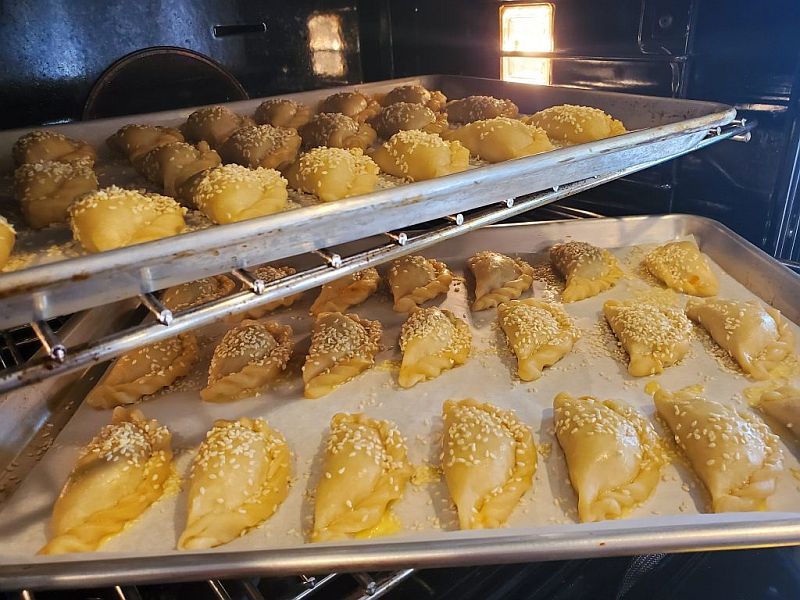 [20]
[20]
Roll out first 24 pieces. This number fits onto a rimmed baking sheet perfectly if you make three columns of 8. Place a teaspoon or so of filling in center of each circle. Fold circles in half and seal edges of resulting half moon shapes by pressing down and then by twisting them into a rope like edge. This signature edge (repulgo in Ladino, Judeo Spanish) takes a little practice. Alternatively, you may use the tines of a fork to seal edges. Make sure no pumpkin is oozing out, or borekas will leak when baking. Repeat rolling and filling process with remaining dough pieces.
Brush top of each boreka with beaten egg and dip it in sesame seeds. Place on prepared baking sheet. I use a silpat, silicone baking sheet liner, for easy clean up or parchment paper works great as well.
Bake borekas at 400°F for 15 to 20 minutes or until light golden color. Remove from oven and place each one gently on a cooling rack. Make these up to 1 month ahead and freeze in an airtight container. To reheat, defrost, and heat on a baking sheet in a 300º F oven for 10 minutes to crisp.
